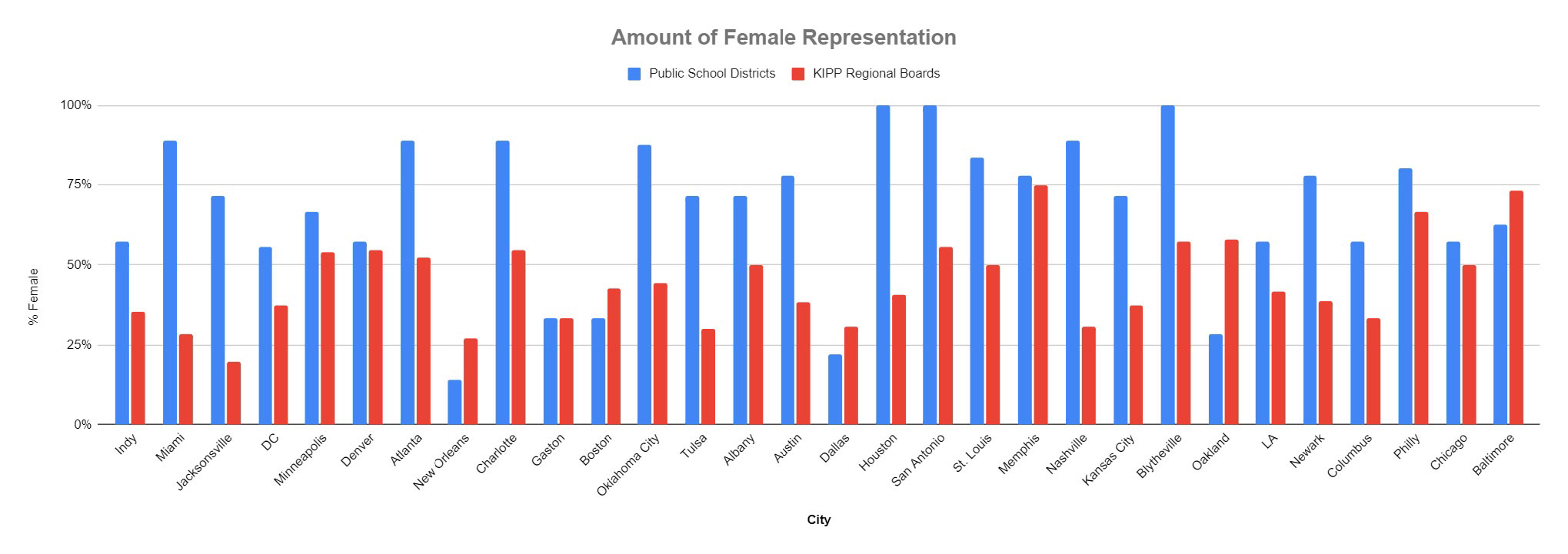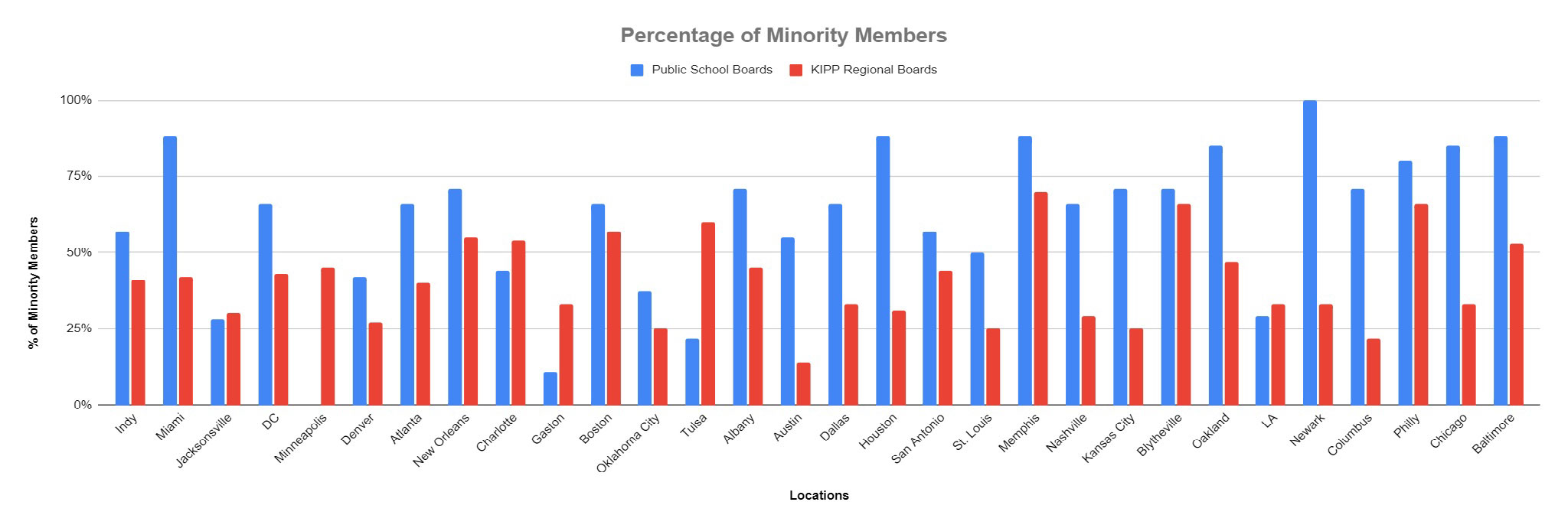
Community Representation on Charter and Public School Boards
Summary
SUMMARY: Public School boards may be more representative of their diverse communities they serve than their charter school counterparts.
Background
Traditionally, local school boards are intended to represent the geographic communities they serve. Yet quite often, research shows many barriers prevent fair representation on traditional school boards: from the difficulties and costs of campaigning, to the influence of particular interest groups, to the time requirements of showing up regularly to school board meetings. This problem is still evident today. Charter schools, according to some, were the solution and have the potential to be more democratic reflections of the community, a way for marginalized populations to have their voices heard in school policy discussions. However, recent research shows that this approach might not be meeting its full potential.
Even in the charter school model, school governance is still too often controlled by groups that are quite different than the communities they are supposed to represent. Worst of all, charter school boards may potentially exacerbate the problem of under-representation of those governed.


In a study of charter school board representation, CEEP researchers examined publicly available school board member data and cross-referenced names and qualifications through social media sites (e.g., Linkedin). Comparing the demographics of district board members to the boards of KIPP charter schools, one of largest charter school chains in the country, they find that local public school districts are more likely to have women on the school board, and significantly higher racial diversity than the boards of the charter schools in those districts. That is, the public school boards were more reflective of the communities they served than were the charter school boards.
Even though KIPP boards are more likely to have larger numbers of members than district school boards (and thus more opportunity for inclusion), the charter school boards are more likely to be populated by members who are white and male than the communities they serve. This is contrary to the hope that a new institutional structure in charter schooling may give marginalized communities more opportunities to participate in their own school governance.
Even though charter schools are often founded by well-meaning people who intend to target the chronic inequitable opportunities associated with public education, the governance structure of those schools doesn’t always reflect those communities, and may in fact be limiting opportunities for those very communities. Since charter school board membership is often based on personal connections and references, they may often perpetuate inequities even as charters are often founded to address those very inequities. Therefore, policymakers, parents, and charter school organizations themselves all need to keep asking how these schools can reflect the people they serve.
THIS BRIEF IS BASED ON A STUDY PUBLISHED IN PHI DELTA KAPPAN: Wilson, G. & Lubienski, C. (2022, April). Democratic Representation and Charter School Governance. Phi Delta Kappan 103 (7). pp 47-50. Available: https:// kappanonline.org/democraticrepresentation- charter-schoolgovernance-kipp-wilson-lubienski/
Authors
Garrett Wilson is lead teacher at the Excel Center School, which is part of Goodwill Education Initiatives, and a doctoral student at Indiana University.
Christopher Lubienski is Director of the Center for Evaluation and Education Policy, and Professor of Education Policy at Indiana University
Edited by: Jason Curlin, Center for Evaluation and Education Policy

